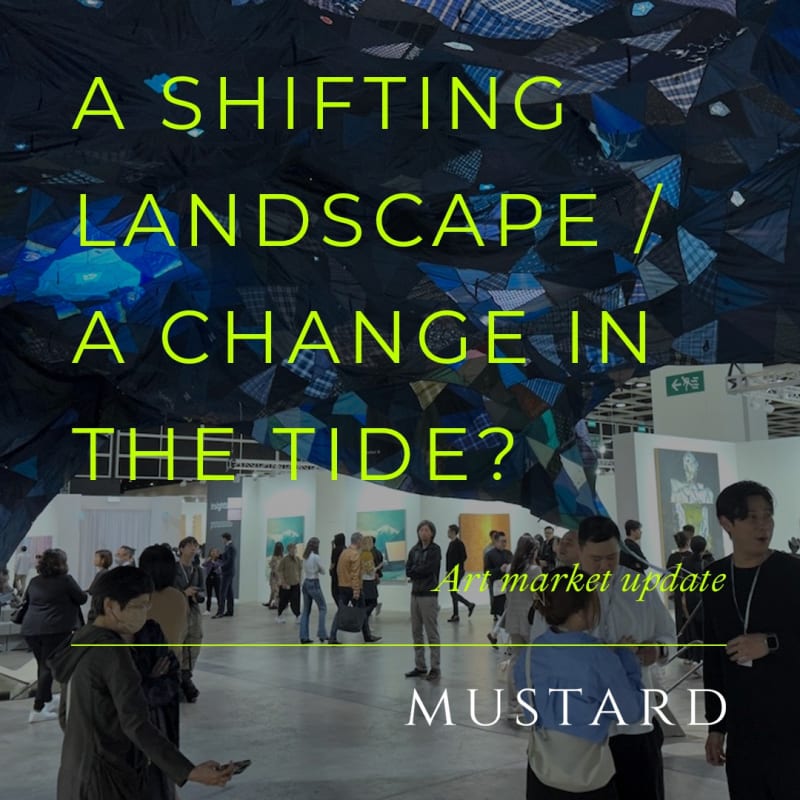A Shifting Landscape: The Art Market in a Time of Uncertainty
The art market has always been a reflection of broader economic and political trends, and as we move through 2025, it is experiencing a period of recalibration. Collectors, dealers, and investors are navigating an increasingly complex landscape shaped by shifting global power dynamics, economic uncertainty, and geopolitical instability
Political Uncertainty and Market Hesitation
In both the United States and the United Kingdom, the political climate is having a profound impact on market confidence. With Trump’s return to power, his erratic decision-making and knee-jerk reactions to pressing domestic and international issues have created a sense of unpredictability. From tariffs and trade tensions to fluctuating interest rates, investors across various sectors—including the art world—are adopting a cautious approach. Meanwhile, in the UK, ongoing economic struggles following Brexit have compounded issues, leading to a more conservative approach to art investment.
Crypto Volatility and Its Ripple Effects
Earlier in the year, the crypto market was enjoying yet another boom, with digital assets and blockchain-based artworks seeing renewed interest. However, the recent volatility in cryptocurrency, spurred in part by Trump’s shifting stance on financial regulation and a crackdown on digital assets, has cooled enthusiasm for speculative investments. The intersection of art and crypto—once a hotbed for innovation—has quieted, with collectors turning away from riskier assets and seeking more traditional forms of investment.
China’s Influence and the Luxury Slowdown
China remains a key player in the global art market, and its economic policies continue to shape buying trends. While Chinese collectors have historically been some of the most active buyers of blue-chip contemporary and modern art, there has been a noticeable pullback in recent months. Economic concerns, regulatory crackdowns, and a more cautious approach to luxury spending have slowed the frenzied buying patterns of previous years. This has led to softer sales at major auctions and a more discerning attitude toward high-ticket acquisitions, This month's art fairs in Hong Kong, including Art Basel Hong Kong and Art Central, will provide a key barometer for the market’s mood in the region.
The Cooling of Emerging Art
With economic uncertainty lingering, the speculative frenzy around emerging artists has significantly cooled. Collectors who once rushed to acquire works by young, untested artists at high prices are now taking a step back. This recalibration isn’t necessarily a negative—it signals a market maturing beyond hype-driven buying, with collectors and institutions making more thoughtful, long-term acquisitions. As a result, galleries are focusing on nurturing sustainable careers for their artists rather than quick turnovers and inflated valuations.
Signs of Optimism: A Change in the Tide?
Despite the challenges, there are positive signals on the horizon. The market’s slowdown has created opportunities for serious collectors to acquire high-quality works at more reasonable prices. Institutions and museums, less driven by speculation, are continuing to support artists in meaningful ways, ensuring that critical voices and important works are still finding audiences.
Additionally, while crypto and NFT speculation may have waned, blockchain technology is still being integrated into the art world in a more sustainable way—offering better transparency, provenance tracking, and innovative digital ownership models.
Furthermore, with major biennials and international art fairs returning in full force, a renewed sense of cultural engagement is taking shape. The industry thrives on cycles, and history has shown that after every period of hesitation, a resurgence follows. Collectors are starting to look ahead, recognizing that a balanced approach to art investment—one that values stability over hype—could mark the beginning of a healthier, more sustainable market.
Conclusion: Quiet Optimism
The art market is undoubtedly in a state of flux, shaped by political uncertainty, economic recalibration, and shifting collector behaviour. However, these moments of adjustment often pave the way for long-term stability. While speculation may have slowed, serious collectors and institutions are still engaged, and new opportunities are emerging for artists and investors alike. A change in the tide is coming—perhaps not with a sudden wave, but with a steady, quiet optimism that signals a more sustainable future for the art world.
